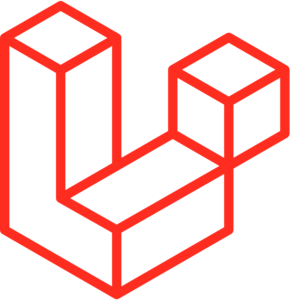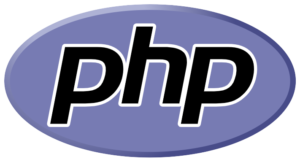Web Development, E-Commerce Web Development Company Mumbai, India
Web Development, E-Commerce Web Development Company Mumbai, India
Devki Infotech provides a wide range of custom web development services tailored to meet the diverse needs of clients:
API development and integration play a pivotal role in modern software development, enabling seamless communication and interaction between different applications and systems. APIs (Application Programming Interfaces) serve as intermediaries, allowing software components to communicate and share data in a standardized manner. Developers create APIs to expose specific functionalities or data from their applications to other developers or services.
API integration involves incorporating these APIs into existing systems or applications to enhance functionality or access external services. This process enables applications to leverage features or data from other platforms, such as social media platforms, payment gateways, or mapping services, without needing to reinvent the wheel.
API development requires careful planning, documentation, and adherence to best practices to ensure compatibility, security, and scalability. Effective integration demands thorough testing to verify seamless interoperability and functionality across different environments.
Custom web portals serve as centralized platforms that provide users with personalized access to information, services, and applications relevant to their needs. Unlike off-the-shelf solutions, custom web portals are tailored to the specific requirements and preferences of organizations or communities, offering a unique user experience.
Developing custom web portals involves analyzing the target audience, understanding their needs, and designing intuitive interfaces that facilitate efficient navigation and interaction. These portals often integrate with various backend systems, databases, and third-party APIs to aggregate and present data in a coherent and user-friendly manner.
Custom web portals can serve diverse purposes, including employee intranets, customer portals, e-learning platforms, and collaboration hubs. They empower users with features such as secure authentication, role-based access control, content management, and interactive communication tools.
Web security and performance optimization are critical aspects of modern web development, ensuring that websites are both safe and efficient for users.
Security measures involve implementing protocols to protect against cyber threats such as hacking, data breaches, and malware. This includes practices like encryption, secure authentication methods, and regular security audits to identify and address vulnerabilities. By safeguarding sensitive information and preventing unauthorized access, web security measures instill trust and confidence in users.
Performance optimization focuses on enhancing the speed, responsiveness, and reliability of websites. Techniques such as code optimization, image compression, and caching help reduce loading times and improve the overall user experience. Additionally, content delivery networks (CDNs) can distribute website content across multiple servers worldwide, further enhancing performance by reducing latency.
Both security and performance optimization are ongoing processes that require continuous monitoring and updates to adapt to evolving threats and technological advancements. By prioritizing these aspects of web development, businesses can ensure that their websites deliver a secure, seamless, and enjoyable experience for users while maintaining a competitive edge in the digital landscape.
Maintenance and support are vital components of successful web development, ensuring that websites remain functional, secure, and up-to-date over time.
Maintenance involves regular monitoring, updating, and troubleshooting to address issues and keep the website running smoothly. This includes tasks such as software updates, security patches, and database backups to prevent downtime and safeguard against cyber threats. Additionally, content management and optimization help keep the website relevant and engaging for users.
Support services provide assistance to users and address any technical or usability issues they encounter while navigating the website. This may involve providing guidance, troubleshooting problems, or resolving customer inquiries promptly and effectively. Responsive support builds trust and loyalty among users, enhancing their overall experience and satisfaction.
Effective maintenance and support require a proactive approach, with dedicated resources and processes in place to address issues promptly and efficiently. By investing in ongoing maintenance and support, businesses can maximize the performance, security, and longevity of their websites, ensuring continued success in the digital realm.
Explore our unparalleled web maintenance and support services, setting new standards of excellence and surpassing all expectations. Our dedicated team ensures your website runs smoothly, offering prompt assistance and proactive solutions to keep your online presence thriving. Experience peace of mind knowing your website is in expert hands, delivering optimal performance and reliability beyond compare.
We craft bespoke solutions that align perfectly with your business goals and requirements, ensuring a unique online presence.
With custom development, you have full control over features, functionality, and design elements, allowing for easy modifications and updates.
Our scalable web solutions grow with your business, accommodating expansion and evolving needs without hassle.
We optimize performance at every level, delivering fast-loading, responsive websites that provide exceptional user experiences.
Our rigorous security measures safeguard your website and data against cyber threats, ensuring peace of mind for you and your users.
We provide dedicated support and maintenance services to keep your website running smoothly, addressing any issues promptly and ensuring continuous improvement.
Stand out in the digital landscape with a custom-built website that reflects your brand identity and offers unparalleled functionality.
While custom development may require a higher initial investment, it offers long-term cost savings by eliminating the need for frequent updates or changes to fit your evolving needs.

Custom web development involves several stages to create a customised website or web application that meets specific needs and requirements. Here’s an overview of the process:
– Requirement Analysis: Understanding the client’s needs, goals, and target audience.
– Project Scope: Defining the project’s scope, features, and functionalities.
– Research: Analyzing competitors, market trends, and best practices.
– Wireframing and Prototyping: Creating wireframes and prototypes to visualize the layout and flow.
– UI/UX Design: Designing the user interface and user experience to ensure the site is intuitive and engaging.
– Responsive Design: Ensuring the design works well on various devices and screen sizes.
– Client Feedback: Iterating on designs based on client feedback.
– Front-End Development: Coding the visual aspects of the website using HTML, CSS, and JavaScript.
– Back-End Development: Setting up the server, database, and application logic.
– Integration: Integrating third-party services, APIs, and plugins as needed.
– Content Management System (CMS): Implementing a CMS if required for easy content updates.
– Functional Testing: Ensuring all features and functionalities work as intended.
– Usability Testing: Checking the user experience and ease of navigation.
– Performance Testing: Assessing the website’s loading speed and responsiveness.
– Cross-Browser and Device Testing: Making sure the site works correctly across different browsers and devices.
– Security Testing: Identifying and fixing security vulnerabilities.
– Hosting: Choosing a hosting provider and setting up the hosting environment.
– Domain Name Registration: Registering a domain name if not already done.
– Deployment: Launching the website or application to the live server.
– Final Testing: Conducting final tests to ensure everything is working as expected.
– Monitoring: Continuously monitoring the website for issues and performance.
– Updates: Regularly updating the website’s content, features, and security patches.
– Support: Providing ongoing support to address any issues or improvements.
Tools and Technologies
– Front-End: HTML5, CSS3, JavaScript, React, Angular, Vue.js
– Back-End: Node.js, PHP, Python, Ruby on Rails, Java
– Database: MySQL, PostgreSQL, MongoDB, Firebase
– CMS: WordPress, Joomla, Drupal
– Version Control: Git, GitHub, GitLab
– Project Management: Jira, Trello, Asana
Each project may have unique requirements, so the process can be adapted accordingly to meet specific needs.















